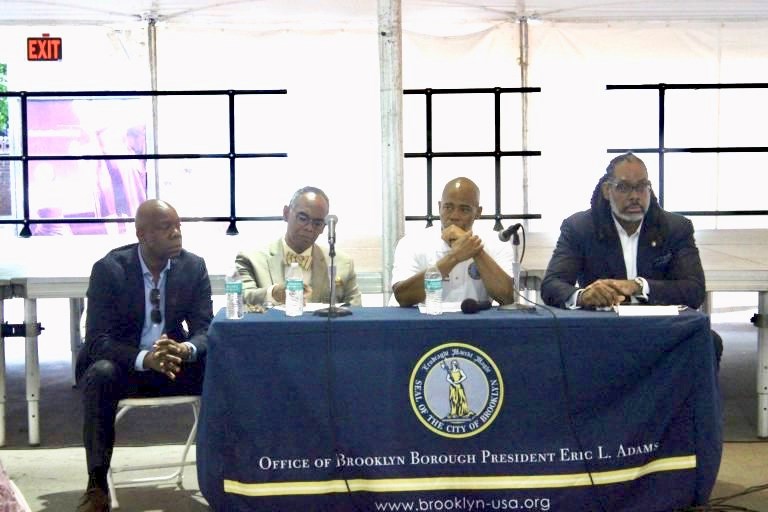Are feral cats the answer to keeping rodents out of Brooklyn?

Brooklyn Borough President Eric Adams convened a "Rat Summit" last Thursday evening to address one of the borough's most pressing issues — how to properly mitigate and eradicate rat infestation, preferably in a more humane way. Despite the downpour, approximately 100 people and two rat-hunting terriers gathered Bedford Stuyvesant Restoration Corporation. Panelists included Adams and District Manager Henry Butler, Bed-Stuy Community Board 3 Chair Richard Flateau and Councilmember Robert Cornegy, Jr.
A recent report showed Brooklyn has the second highest concentration of callers dialing 311 to relay rodent-related complaints. These grievances are most congested in the Crown Heights, Bedford Stuyvesant and Clinton Hill neighborhoods. According to Councilmember Cornegy, the culprit of the rat infestation in these specific neighborhoods is development.
"We know that we increased the amount of development, renovations and that is contributing to the rat problem," Cornegy said. "It's not like Bed-Stuy and Crown Heights are dirty places."

Caroline Bragdon, the director of Neighborhood Interventions for Pest Control Services at the New York City Department of Health (DOH), said rats only need one ounce of food and water a day to thrive and so the easiest way to eradicate rodents is sanitation. She added that DOH will lead information sessions, so-called free "Rat Academy" courses in any community if requested.
Nancy Regula from the Guardian Angels introduced a feral cat initiative that releases neutered, undomesticated cats into neighborhoods to decrease rat populations. Representatives from R.A.T.S. (Ryders Alley Trencher-fed Society), a group that trains canines to hunt rats, showed off their ratting terriers as an alternative to mouse traps and poisons.
Adams said that owners of high-rise buildings may be the real culprits because they pay the violation fines -- up to $2,000 -- as a cost of doing business rather than change their sanitation practices, leading to homeowners and small business owners in the affected areas to deal with ongoing rodent issues. He plans to increase fines for high-rises to pressure them to address their rodent problem properly.

Demetrice Mills, the board president of the Brooklyn and Queens Land Trust, said though he oversees 37 community gardens, it seemed like his plots in Bed-Stuy and Bushwick were getting more notices and violations from the DOH than other gardens.
"There are over 600 community gardens in Brooklyn, in Queens and in New York City," Mills said. "I know that some of those other gardens are not getting community violations. So why are we being singled out for violations in these particular areas?"
Bragdon responded that the department has priority neighborhoods which get more frequent rodent inspections and that Bed-Stuy and Bushwick are two of these priority neighborhoods.
Adams shared his concern that the DOH uses heavier enforcement in certain neighborhoods, stating the department penalizes some communities over others.
"If I'm looking at the summonses and I am seeing Bed-Stuy, South Jamaica, South Bronx and other communities of color that have been hit with these summonses, that's problematic," Adams said. "I'm so glad [Mills] spoke up, because we should be giving institutions like [community gardens] assistance, not citations. Citations should go to the bad guys."
Cornegy had the last word before complimentary rat-proof trashcans were raffled off to audience members. He emphasized that the city is allocating more resources.
"We should be using more resources, from a city perspective, to deal with this issue," said Cornegy."I'm hearing from our community that you want a more humane way to eradicate the rodent problem. This may be a process that takes longer, and I will be taking that message back with me."




